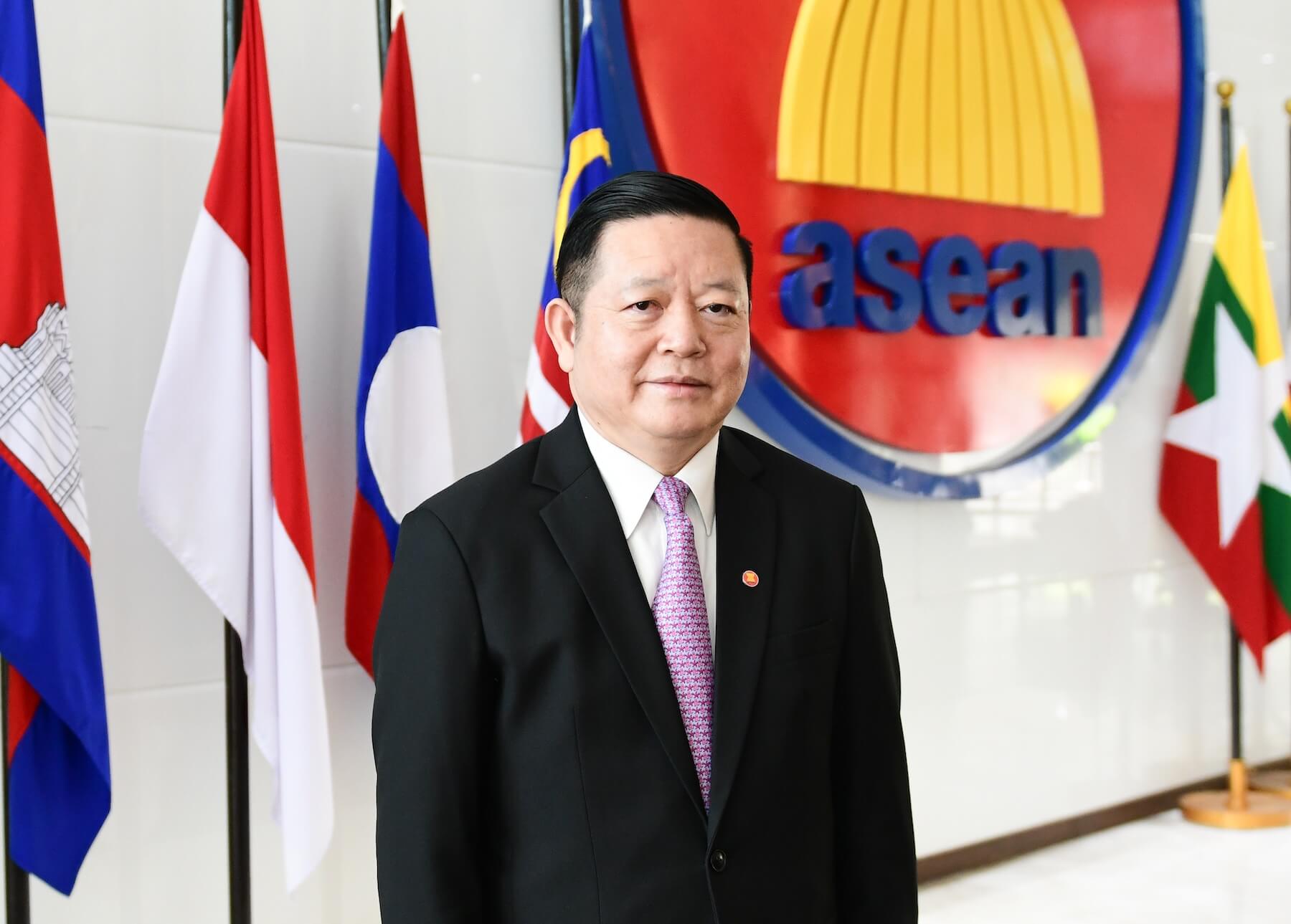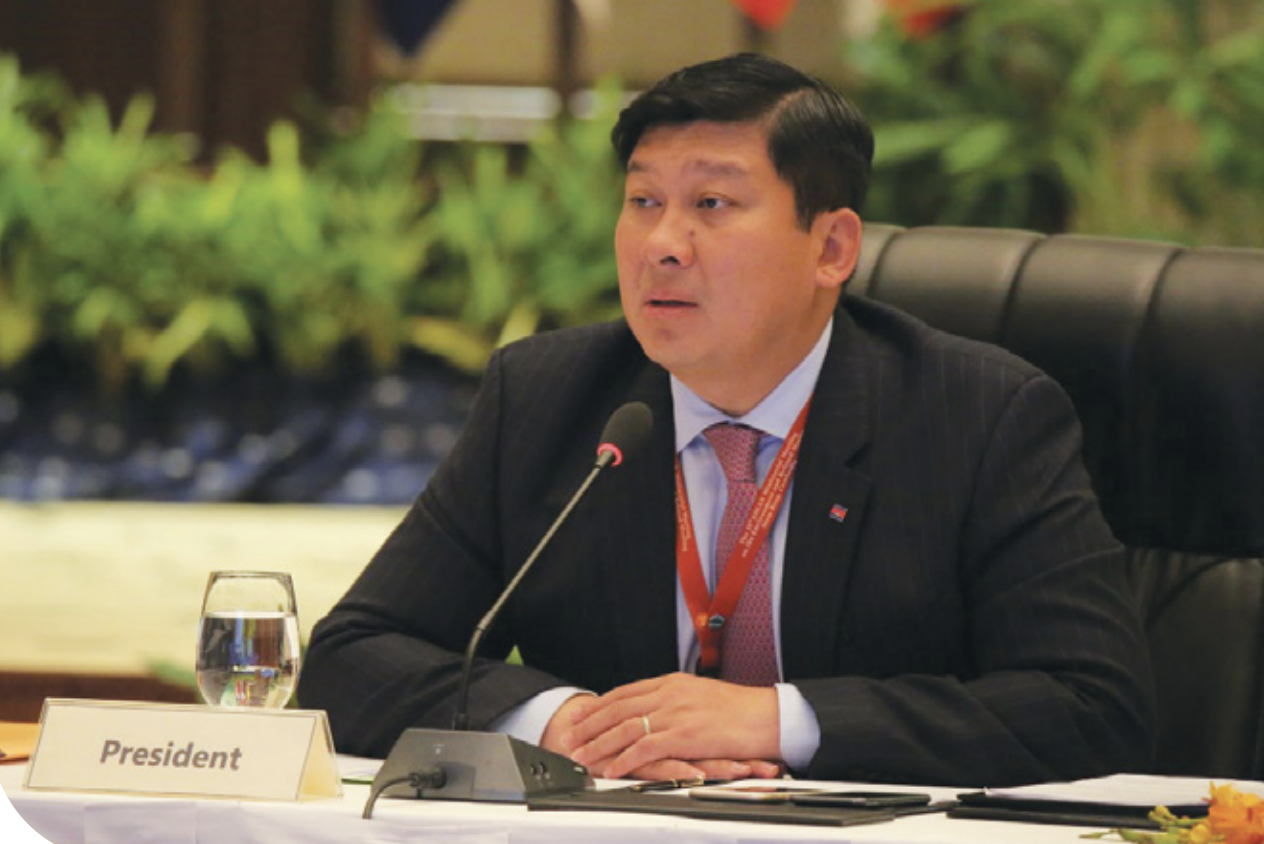


Twenty years ago, on 26 December 2004, the Indian Ocean Tsunami devastated Aceh, Indonesia and several other countries in Southeast Asia, including Malaysia and Thailand. What actions did ASEAN take in responding to this catastrophic disaster?
Following the Indian Ocean Tsunami disaster, the ASEAN Leaders had an urgent meeting in Jakarta on 6 January 2005 to show solidarity and commitment to help the affected countries. They issued the Declaration on Action to Strengthen Emergency Relief, Rehabilitation, Reconstruction, and Prevention in the Aftermath of the Earthquake and Tsunami Disaster of 26 December 2004, which outlined collective concrete measures in responding to the impact of the tsunami and in preventing future similar tragedies. Among others, the idea of a regional ASEAN humanitarian centre and a regional instrument on disaster management and emergency response was conceived.
Following the ASEAN Leaders’ guidance, the ASEAN Agreement on Disaster Management and Emergency Response (AADMER) was developed and signed by ASEAN Foreign Ministers in July 2005 and entered into force in 2009. The agreement aims to achieve a substantial reduction of disaster losses in lives and in the social, economic, and environmental assets in the region, through cooperation in developing and implementing measures, such as risk identification and monitoring, early warning systems, standby arrangements for disaster relief and emergency response, exchange of information and technology, and the provision of mutual assistance.
AADMER has facilitated enhanced collaboration among ASEAN Member States in response to devastating disasters, including post-Cyclone Nargis in Myanmar in 2008 and Typhoon Haiyan in the Philippines in 2013. In both instances, ASEAN coordinated pledging conferences to aid the affected countries, bringing together partners and potential donors to bolster relief and recovery initiatives. Additionally, ASEAN, through the ASEAN Coordinating Centre for Humanitarian Assistance on disaster management (AHA Centre), developed the ASEAN Disaster Monitoring and Response System (DMRS) for near real-time disaster monitoring across the region. These advancements underscore ASEAN’s commitment and determination to effectively implement AADMER. Through collaboration under AADMER, ASEAN Member States were also encouraged to develop early warning for disasters, including tsunamis.
I would like to stress that, in parallel with the regional efforts, ASEAN Member States also provided immediate help bilaterally to the affected countries after the Indian Ocean Tsunami. For example, Brunei Darussalam deployed a medical team from its Royal Armed Forces to Aceh, Indonesia, and provided financial aid for recovery efforts. Cambodia sent financial assistance to Indonesia and Thailand. Malaysia, despite experiencing its own losses, sent its Special Malaysian Rescue Team (SMART) and medical teams to Indonesia. Additionally, Malaysia allowed two of its airports to be used as staging areas for relief items going to Aceh. Singapore sent its military, civilian rescue teams, medical teams, provided financial aid, and deployed its assets to support relief operations in Indonesia and Thailand. Other countries also provided financial aid and resources to support relief operations in the affected countries.
The Indian Ocean Tsunami provided an important lesson and impetus for ASEAN to enhance disaster management mechanisms in the region. What are the key learnings from that catastrophic event?
There are several important lessons and driving forces for ASEAN to improve the disaster management mechanism in the region. Firstly, the crucial takeaway from this catastrophic event is the importance of having a comprehensive early warning system (EWS) to offer timely alerts and enable swift evacuation. Technology advancement can play an important role here. Since then, many countries in the region have developed their end-to-end EWS utilising multiple channels, including TV, radio, short messaging services, and other devices. Secondly, the importance of developing resilient communities through public education campaigns focusing on disaster risk reduction and preparedness. This is exemplified, among others, by the efforts of the Governments of Indonesia and Thailand, respectively, in implementing tsunami awareness-raising programmes for coastal communities and school children in tsunami-prone areas. Thirdly, the event demonstrated that disasters do not respect borders, showcasing the shared vulnerabilities among communities and emphasising the importance of knowledge sharing, partnership building, international cooperation, and mutual assistance during crises. Fourth, an emphasis on strengthening disaster preparedness and response frameworks at both the national and regional levels. This includes the development of the Standard Operating Procedure for Regional Standby Arrangements and Coordination of Joint Disaster Relief and Emergency Response Operations (SASOP), which identifies and allocates assets and capacities of ASEAN Member States for potential use in disaster relief and emergency response as well as procedures for mobilisation for ASEAN joint disaster response.
Concerning the increasing frequency and scale of disasters in the ASEAN region and their damaging impacts in recent years, what actions has ASEAN taken in enhancing disaster management mechanisms in the region? Are there any programmes and strategic plans in place for disaster risk reduction and resilience building?
To further strengthen our readiness and capacity to address evolving and complex disaster risks, ASEAN continues to implement and improve the series of AADMER work programmes. The current AADMER Work Programme is the third 5-year iteration, covering the period of 2021-2025, which is also aligned with relevant global agreements, including the Sendai Framework for Disaster Risk Reduction 2015-2030 (SFDRR), the Paris Agreement on Climate Change, and 2030 Agenda on Sustainable Development, among others.
Through the implementation of the AADMER Work Programme, the regional mechanisms, including the AHA Centre, have grown stronger over the years, better equipped with several key tools and instruments, such as the Disaster Risk and Monitoring System, Emergency Operation Centre, Disaster Emergency Logistics System for ASEAN or DELSA, and the ASEAN Emergency Response and Assessment Team or ASEAN-ERAT.
In addition, the institutional capacities of ASEAN Member States to monitor, prevent, mitigate, respond to and recover have also been strengthened through several capacity-building initiatives, such as the AHA Centre Executive Programme, AHA Centre Executive Leadership in Emergency and Disaster Management for ASEAN Programme, Disaster Risk Management Capacity Building Programme, localisation of ASEAN-ERAT, and Senior Executive Programme on Disaster Management.
ASEAN is also committed to reducing disaster and climate risks to achieve sustainable development through implementing the ASEAN Leaders’ Declaration on Sustainable Resilience.
I have to highlight that, among others, the Bandar Seri Begawan Declaration on the Strategic and Holistic Initiative to Link ASEAN Responses to Emergencies and Disasters (ASEAN SHIELD) is significant because it is promoting a whole-of-ASEAN approach in disaster management, and improving disaster financing in the region. Through the revised financial rules of the ADMER Fund, the public and private sectors can contribute to ASEAN disaster response and recovery activities. Furthermore, the ASEAN SHIELD also strengthens the role of the ASEAN Humanitarian Assistance Coordinator (AHAC) to facilitate the region’s timely and expeditious response to emergencies in a strategic, coordinated and holistic manner.
As ASEAN has strengthened the capacity and confidence in its collective response, the region is committed to responding as “One” under the ASEAN Declaration on One ASEAN One Response: ASEAN Responding to Disasters as One Inside the Region and Outside the Region, and hopefully one day in the future, ASEAN will realise its vision to become a global leader in disaster management and emergency response.
To build regional disaster resilience, ASEAN has also engaged with various international partners and stakeholders. How important are partnerships for ASEAN in achieving this objective?
Partnerships are vital for ASEAN in building regional resilience. Collaborating with international partners and stakeholders allows ASEAN to leverage diverse expertise, resources, and technologies that are essential for enhancing disaster monitoring and analysis, preparedness, response, and recovery efforts. These partnerships facilitate knowledge sharing and capacity building, enabling ASEAN Member States to adopt best practices and innovative approaches in disaster management.
Engaging with our dialogue, sectoral dialogue and development partners, as well as international organisations, such as the United Nations and the Red Cross and Red Crescent (RCRC) movement, has been instrumental in fostering a holistic and integrated approach to disaster risk reduction. For example, the ASEAN and the United Nations have developed the ASEAN–UN Joint Strategic Plan of Action on Disaster Management. The Memorandum of Understanding (MOU) between ASEAN and the International Federation of the Red Cross (IFRC) on the Strengthening of Community Resilience in Southeast Asia was signed in 2022 to signify the cooperation between the RCRC and ASEAN in the strengthening of community resilience at regional, national and local levels in the ASEAN region.
Furthermore, partnerships with non-governmental organisations, academia, the private sector, and the people play a crucial role. During the emergency response operations to the earthquake and tsunami in Palu in 2018, ASEAN received contributions from the public to build houses in the new ASEAN village there. These stakeholders bring unique perspectives and capabilities that complement governmental efforts, such as community-based disaster risk reduction programs, research and innovation in disaster resilience, and mobilisation of resources for emergency response.
This demonstrates the importance of partnership for ASEAN in building a people-centred, people-oriented and resilient community.
This interview was conducted by the ASEAN Coordinating Centre for Humanitarian Assistance on disaster management (AHA Centre) on 19 July 2024 at the ASEAN Secretariat. Edited versions of the interview were shown during the commemorative events of the 20th Indian Ocean Tsunami Anniversary.








